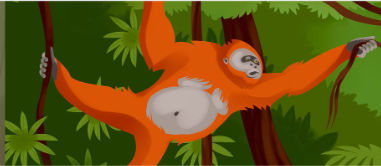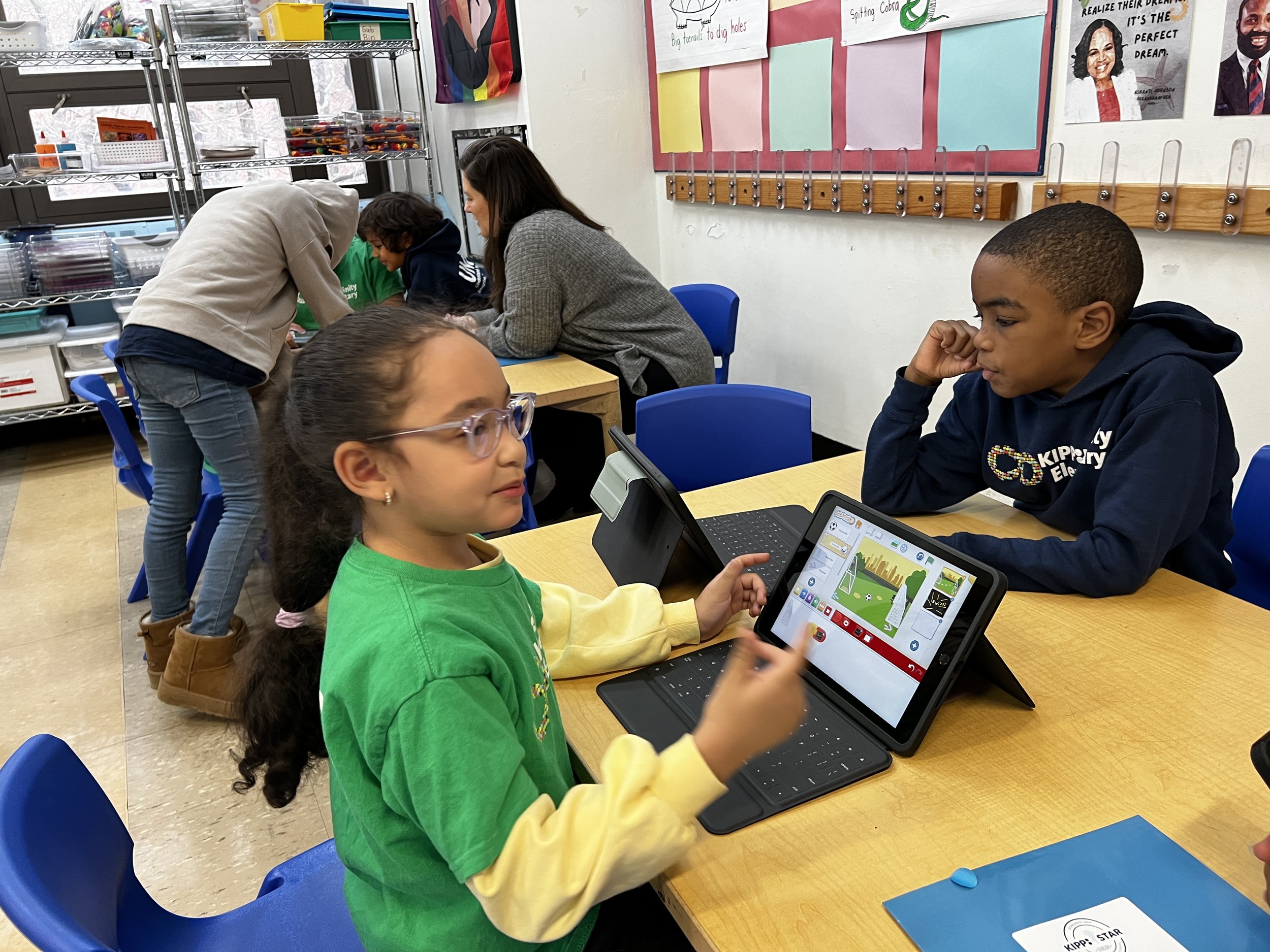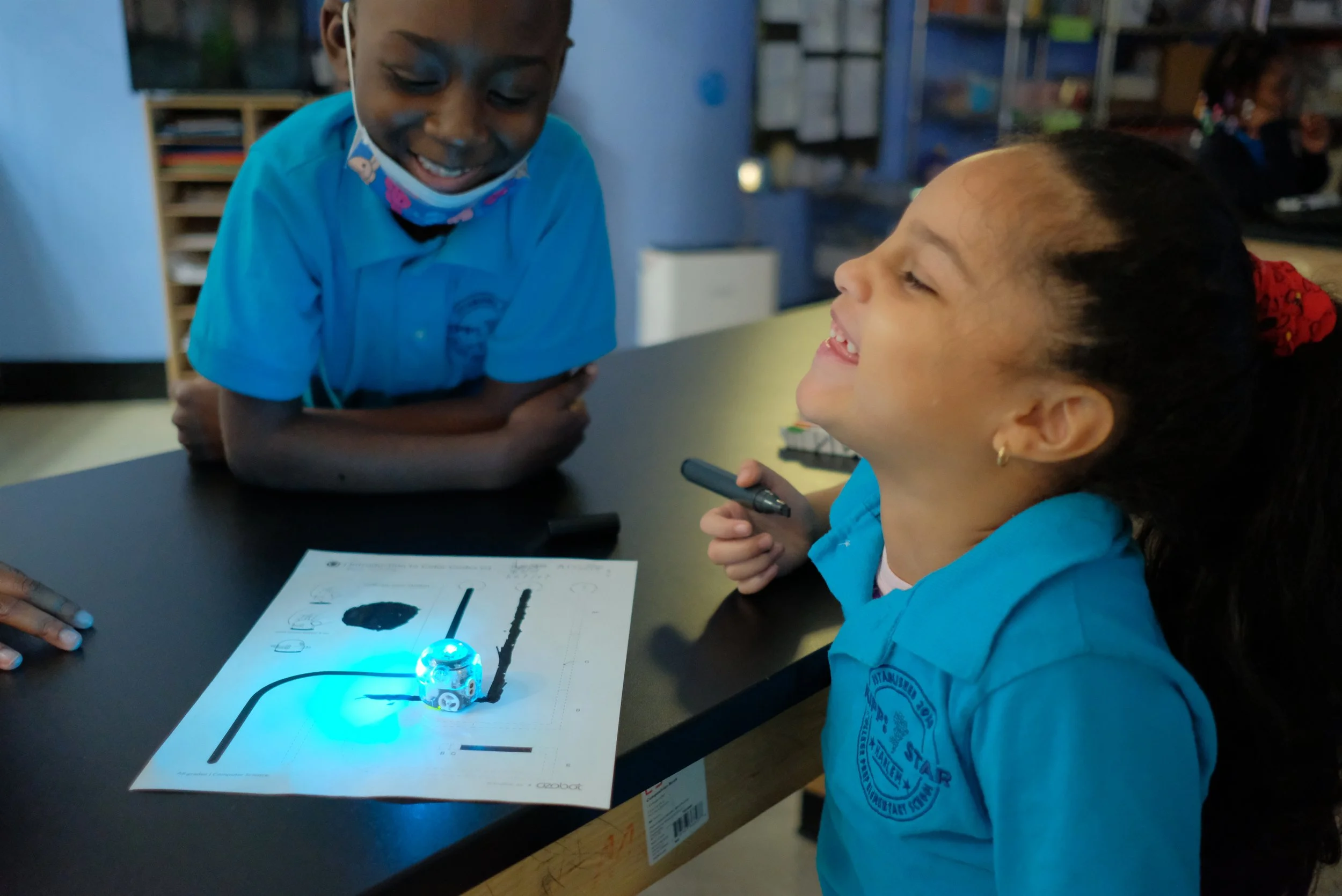
2nd - 3rd Grade
2nd - 3rd Grade Computational Thinking Units
Unit 5: Recycled Toys Unplugged Unit (Coming Soon)
Unit 6: Environments/Survival Ozobot Unit (Coming Soon)
UNIT 1: Video Game Design Scratch Jr. Unit
Unit Overview:
This unit explores computational thinking by teaching students how to create more complex programs. After several activities to teach students about loops / repeating commands, number patterns, and computer science, students will create two types of video games: a simple “sweep the grid” style game where an object moves across every square on the screen, and a more complex game with controls, obstacles, and multiple triggers. Students will culminate by designing their own games.
Standards:
2-3.CT.1: Create a model of an object or computational process in order to identify patterns and essential elements of the object or process.
2-3CT.3 Present the same data in multiple visual fo rmats in order to tell a story about the data.
2-3.CT.4 Identify multiple ways that the same problem could be decomposed into smaller steps
2-3.CT.5 Identify the essential details needed to perform a general task in different settings or situations.
2-3.CT.6 Create two or more algorithms for the same task.
2-3.CT.8 Identify steps within a task that should only be carried out under certain precise conditions.
2-3.CT.9 Identify and debug errors within an algorithm or program that includes sequencing or repetition.
2-3.CT.10 Develop and document a plan that outlines specific steps taken to complete a project.
UNIT 2: Plant and Animal Relationships Ozobot Unit
Unit Overview:
In this unit, students learn about seed dispersal with an Ozobot. They explore sequencing in computer science with a physical seed sort and then use the Ozobot to represent seed dispersal scenarios. After learning about Ozobot mechanics, students create a model for the Manhattan Children’s Museum demonstrating seed dispersal using the Ozobot. They then use their computational thinking skills to design and present a museum exhibit demonstrating how seeds are dispersed.
Standards:
2-3.CT.1: Create a model of an object or computational process in order to identify patterns and essential elements of the object or process.
2-3CT.3 Present the same data in multiple visual fo rmats in order to tell a story about the data.
2-3.CT.4 Identify multiple ways that the same problem could be decomposed into smaller steps
2-3.CT.5 Identify the essential details needed to perform a general task in different settings or situations.
2-3.CT.6 Create two or more algorithms for the same task.
2-3.CT.8 Identify steps within a task that should only be carried out under certain precise conditions.
2-3.CT.9 Identify and debug errors within an algorithm or program that includes sequencing or repetition.
2-3.CT.10 Develop and document a plan that outlines specific steps taken to complete a project.
UNIT 3: Balancing Forces Scratch Unit
Unit Overview:
In this unit, students use knowledge of computational thinking to tackle space junk. Hired by former NASA Director Charles Bolden, they develop a computer model for cleaning up space. The unit covers electromagnets, Scratch basics, and a final coding challenge to create a space junk collector model and story. This unit culminates in a student showcase and space awards.
Standards:
2-3.CT.1: Create a model of an object or computational process in order to identify patterns and essential elements of the object or process.
2-3CT.3 Present the same data in multiple visual fo rmats in order to tell a story about the data.
2-3.CT.4 Identify multiple ways that the same problem could be decomposed into smaller steps
2-3.CT.5 Identify the essential details needed to perform a general task in different settings or situations.
2-3.CT.6 Create two or more algorithms for the same task.
2-3.CT.8 Identify steps within a task that should only be carried out under certain precise conditions.
2-3.CT.9 Identify and debug errors within an algorithm or program that includes sequencing or repetition.
2-3.CT.10 Develop and document a plan that outlines specific steps taken to complete a project.
UNIT 4: Lights, Camera, Science! TinkerCad Unit
Unit Overview:
In this engaging unit, students take on the role of consultants for a sci-fi movie. Their tasks include identifying and addressing scientific inaccuracies, collaborating in teams, sketching 2D concept art, and constructing 3D models utilizing TinkerCad. Employing principles of inheritance, traits, and Computational Thinking, they artistically design creatures and culminate the unit by pitching and presenting their imaginative creations.
Standards:
2-3.CT.1: Create a model of an object or computational process in order to identify patterns and essential elements of the object or process.
2-3CT.3 Present the same data in multiple visual fo rmats in order to tell a story about the data.
2-3.CT.4 Identify multiple ways that the same problem could be decomposed into smaller steps
2-3.CT.5 Identify the essential details needed to perform a general task in different settings or situations.
2-3.CT.6 Create two or more algorithms for the same task.
2-3.CT.8 Identify steps within a task that should only be carried out under certain precise conditions.
2-3.CT.9 Identify and debug errors within an algorithm or program that includes sequencing or repetition.
2-3.CT.10 Develop and document a plan that outlines specific steps taken to complete a project.











